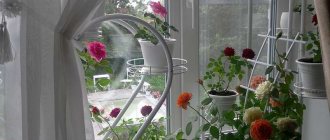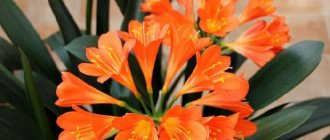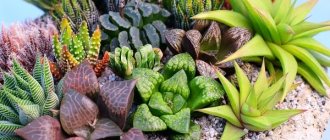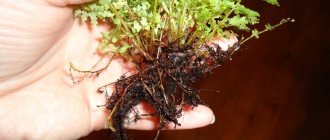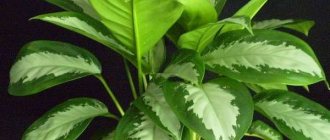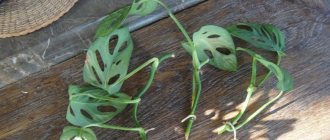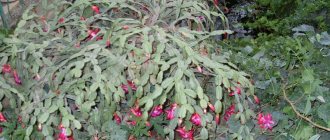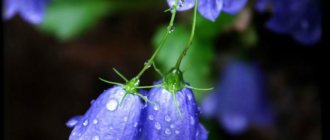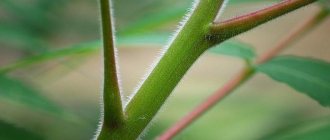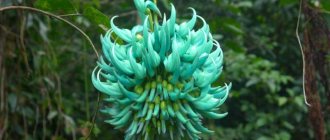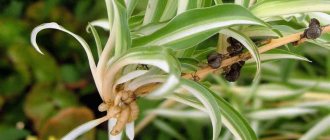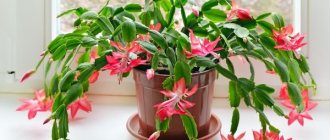Flower growers regularly replenish their home collection with new medicinal or decorative species. They are looked for in special stores, greenhouses, brought from friends or brought from distant countries. A message about a houseplant will help you learn about the conditions of keeping, the characteristics of flowering or fruiting, diseases and the effects of flowers on humans.
Drug group
Lovers of indoor flowers notice their effects on health and mood. Some species have healing properties, so it is useful to place pots with such plants in work areas, bedrooms and children’s rooms.
Famous medicinal flowers:
- geranium;
- Sansevieria;
- Kalanchoe;
- aloe;
- Golden mustache.
Geranium occupies a leading place in floriculture. It attracts attention with bright caps of flowers, and the plant also purifies polluted air. Pelargonium with red petals has strong healing properties. It has a sedative and anti-inflammatory effect on the body. Medicinal decoctions from geranium normalize heart function, heal chronic diseases of the digestive tract, and lotions cleanse the skin of ulcers and boils.
Sansevieria is also called pike tail or mother-in-law's tongue. The plant kills infections that live in the air. A tincture on its leaves helps heal appendages, and decoctions strengthen the immune system during flu epidemics or other colds.
In Russia and neighboring countries, a particularly popular indoor flower is Kalanchoe, or homemade ginseng. It is used to treat fistulas, ulcers, boils and wounds. Juice is extracted from the leaves of the plant, which must be filtered and sterilized. Then a piece of gauze is soaked in it and applied to the sore spot. And to strengthen the immune system, you can eat one tablespoon of babies every day - growths that are cut from the leaves. They are also added to salads.
In the Russian botanical atlas there is another famous medicinal plant - aloe, or agave. Its juice heals wounds, softens corns, and cleanses the skin of acne. The liquid is added to face and hair masks, and whitening scrubs are prepared on its basis.
Golden mustache, or callisia, is also known for its healing properties. Decoctions and tinctures are prepared based on the leaves. They help with burns and lichen, speed up metabolic processes in the body and lower blood sugar levels. The golden mustache also eliminates the symptoms of heart disease, strengthens the immune system and normalizes the functioning of the gallbladder.
Ornamental plants
There are two types of flowers - decorative-leaved and decorative-flowering. They differ in their structure and appearance. The main structural features of indoor plants that belong to the decorative deciduous class are that they do not bloom. They are kept indoors for their beautiful leaves. List of popular potted plants:
- myrtle;
- arrowroot;
- variegated codiaum.
Myrtle looks like grass; it is a plant with a large number of small leaves of bright green color. It does not require special care, but is valued for its fragrant, pleasant aroma. Arrowroot attracts with the interesting colors of the leaves - dark, covered with light spots. They grow in pairs, the stems are located opposite each other. The plant develops well in any conditions, it is unpretentious.
Variegated codiaum looks unusual: it has long leaves with yellow and red veins. The plant needs moisture and constant warmth. If it doesn’t like the climate of the room, it will shed its leaves.
List of flowering ornamental plants:
- anthurium;
- balsam;
- hibiscus;
- lobelia.
Perennial anthurium flowers and leaves have an unusual shape. There are several types of plants - with green, white, red, yellow and almost black petals. The tall flower loves warmth, so it needs to be looked after. The balsam bush blooms for quite a long time. In warm weather, it is covered with a cap of small buds, and dark green leaves can reach 50 cm in length. The plant loves moisture very much; it needs not only to be watered, but also sprayed or wiped with a damp cloth.
Hibiscus is a tree plant and blooms almost constantly. The petals are large, but very thin, and feel like litmus paper. Its peculiarity is that flowering lasts only one day; the next morning the buds wither and fall off. But in their place, new ones appear in the evening.
Ampelous lobelia should be positioned high, because its stems grow downwards and entwine the flowerpots. During flowering, which lasts almost the whole year, it will decorate a balcony or loggia. This representative of the flora has several colors - from milky white to deep blue. Small flowers look like bells; they bloom and almost completely hide the greenery.
How to draw Dieffenbachia, why I like it
We have Dieffenbachia growing at home. When her parents bought her, she was very young, like me. Every year it grew and grew to a height of almost 1 meter. A whole tree! My responsibilities include watering the plant and wiping the leaves once a week. It's so great to take care of a flower and see how it grows, becoming bigger and more beautiful every year.
Fruits on the windowsill
Although the main function of indoor plants is to saturate the air with oxygen, you can select fruit-bearing species from an encyclopedia or catalog. Not all garden crops are adapted to live in a house, but some exotic plants tolerate the conditions of a city apartment or private house:
- citruses;
- pomegranate;
- banana;
- a pineapple;
- date fruit;
- olive.
How many books have been written about floriculture with descriptions and beautiful pictures, but still not all plant lovers know that citrus fruits can be grown on a windowsill. Lemons, limes, tangerines and kumquats are quite capricious; they can get sick and refuse to bear fruit. Sometimes they become covered with spider mites. But with proper care at home, you can get small, tasty fruits. Citrus fruits love moisture and warmth; they need fertilizing and replanting.
Miniature grenades appeared recently, but have already taken root in the CIS countries. In addition to small sweet fruits, the plant will delight the owner with beautiful fragrant flowers. In warm, sunny areas, you can grow an ornamental or edible banana. The first will only bloom, the second will produce small fruits. But they taste no different from store-bought ones.
Today, all information about indoor plants is available to any gardener. Many people already know that you can grow a pineapple from a leaf rosette at home. The fruit will be small, the leaves will be huge. And for rapid development, you need to periodically fumigate the pot with smoke and frequently water the soil. Pineapple is not capricious, it quickly takes root and rarely gets sick, but still requires proper care.
The date palm is only suitable for houses with high ceilings, because it reaches two meters in height. The plant will take root in cool climates; it does not like heat, but prefers humidity. By the end of summer, the palm tree will begin to bear fruit; it is better to dry the dates, since they are not particularly tasty when fresh. Breeders also bred the indoor olive tree. For your home, you can buy several different varieties that produce black and green fruits. But it is not only the edible qualities of the tree that attract gardeners. The plant itself is very beautiful, it is also suitable as a decorative one.
You can successfully grow feijoa, mango, avocado and even rambutan at home. Exotic plants easily take root if you provide them with native conditions - a lot of light, warmth and a high level of humidity.
How to draw a violet, why I like it
In my room, violets grow on the windowsill: blue, pink, red. These flowers are small in size and bloom with very delicate flowers. My grandmother says that a girl should be as tender as a violet.
Blooming exotics
Gardeners enthusiastically read herbal books, encyclopedias with photographs and names of indoor plants in alphabetical order, but are afraid to buy exotic plants. In fact, some unusual flowers take root well in the apartment:
- sprekelia;
- Lachenalia;
- slipway;
- tuberose;
- tillandsia;
- Streptocarpus.
The rare sprekelia flower is a bulbous plant that blooms in the spring. It has unremarkable long light green leaves. But its flowers cannot be confused with others. The bright red petals are simply huge, the buds resemble an unusual elongated orchid. Lachenalia also looks unusual for Slavic countries. Its flowers are collected in large clusters, and in appearance they look like large tubes. The colors can be different - yellow, red or orange. The petals stand out with flame against the background of dark foliage. The flowering period depends on the variety - it can last from spring to autumn or from winter to March.
Stapelia surprises even experienced botanists with its size. She has huge fleshy flowers, their petals are covered with fluff, they resemble a starfish. Color - from golden to purple with small patterns. But the plant is not suitable for everyone - its aroma is quite unpleasant, similar to the smell of rotten meat.
Tuberose has the opposite effect. It is so fragrant that its pollen is used in perfumery and cosmetology. In the last century, the plant was very popular, but they did not have time to spread it, and now its time has passed - it is almost impossible to find it at home. The appearance of tuberose is also attractive - the snow-white flowers are very large, similar to lotuses.
Blue Tillandsia is distinguished by the original shape of its bract, which is often confused with buds. It is flat, elongated and looks like a Christmas tree, and is painted in a delicate lavender shade. Tillandsia petals are small and appear on the sides of the bract. They have a bright blue or blue color.
Streptocarpus is the result of many years of work by breeders. This plant is a hybrid of many flowers. When its buds bloom, they look like large bright butterflies. The petals are very bright - purple, blue, blue, yellow or pink. But on the outside they are white, as is the border around the edges. Streptocarpus blooms for a long time, only 5-6 buds appear, but they are very large.
There are other exotic plants that grow well at home. But some species scare off their owners with an unpleasant odor, while others are generally considered predators - they eat insects and small animals.
